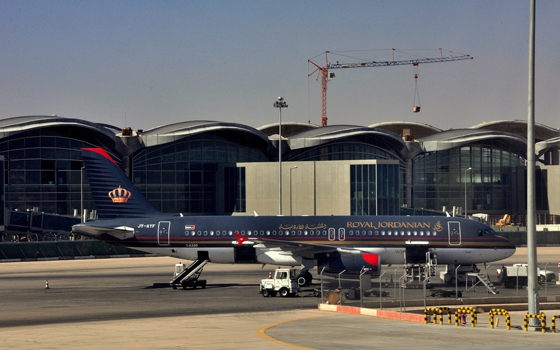Increasing capacity in Jordan’s aviation sector could hold the key to growing the tourism sector and improving inter-regional connectivity over the next five years.
Annual passenger traffic through Jordan is expected to double to more than 15m by 2034, helping to increase the aviation sector’s contribution to GDP from 6% to 12%, according to the International Air Transport Association.
Boosting aviation capacity
Key to fulfilling this goal is structuring routes to support the increased flow of passengers, particularly in terms of short- to medium-haul flights.
Local and regional low-cost carriers have begun offering additional services through Amman, further establishing the country as a transit hub and driving down airfares.
In mid-February Jordan’s flag carrier Royal Jordanian began offering regular routes from Tel Aviv, Israel to Guangzhou in China via Amman’s Queen Alia International Airport (QAIA) in a bid to cater to growing business travel. This move comes on the heels of an agreement signed with Spanish carrier Vueling Airlines in December for direct flights to Barcelona and Rome.
Other operators in the region are also looking to capitalize on connections in Jordan. Turkey’s Pegasus Airlines added three weekly flights between QAIA and Ankara in late March, while Italy’s Alitalia upped the number of its flights between Amman and Rome to five during peak travel times after the route saw a 20% year-on-year increase in traffic to more than 25,000 passengers last year.
The new routes follow Air Arabia’s 2015 designation of Amman as a hub. The UAE-based carrier’s acquisition of 49% of Jordan’s Petra Airlines, which now operates as a local low-cost carrier under the Air Arabia Jordan brand name, has increased connectivity between the Levant region and Gulf Cooperation Council countries.
Alongside efforts to increase flight capacity, recent renovations on the ground should help support a flurry of anticipated passenger and cargo activity at Jordan’s busiest airport.
The addition of a $750m terminal and $100m worth of overhauls to facilities at QAIA in 2012 raised its capacity from 3.5m to 9m passengers per year. With about 7m visitors passing through in 2015 and cargo traffic up 7.3% at 100,000 tons, the airport has room to accommodate further growth.
Tourism carry-through
Establishing new routes provides airlines in Jordan with more flexibility to enter untapped markets, appealing to international travelers in nearby countries who are looking for cheaper day trips. This should give a much-needed boost to a tourism sector that has been impacted by regional instability. While the sector has traditionally been a major contributor to Jordan’s economy, accounting for around 14% of GDP, arrivals fell from 8.2m in 2010 to 4.8m in 2015.
To help boost tourism sector growth, the government has set aside JD37m ($52.1m) for marketing activities, cut visa fees from JD40 ($56.3) to JD10 ($14) and reduced entry fees to certain tourist sites for Arab visitors.
For its part, the Jordan Tourism Board has adjusted its focus to segments that have been less affected by regional trends. For example, it is actively targeting religious tourism, the meetings, incentives, conferences and exhibitions segment, as well as ecotourism and adventure travel.
An open skies agreement signed in 2010 between the EU and Jordan allows low-cost airlines to conduct direct flights between Jordan and anywhere in Europe, incentivizing airlines to use Amman as a connection hub.
To help fill the gap caused by declining visits from European tourists, which fell by 20.5% last year, Jordan has been repositioning itself to attract travelers from emerging economies.
With tourists from countries such as Spain and Italy historically being strong source markets for Jordan in the summer season, companies are now considering alternative markets, such as Algeria and India.
Oxford Business Group
25 April






















































